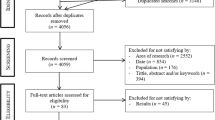Abstract
Purpose: To evaluate measures of epilepsy-specific impact currently available for use with children and adolescents. The relative merits of the different measures are examined. Method: Four published epilepsy-specific impact measures, the Epilepsy and Learning Disabilities Quality of Life Scale (ELDQOL), the Health-related Quality of Life in Children with Epilepsy (HRQoLCE); the Impact of Childhood Neurologic Disability Scale (ICND), the Quality of Life in Epilepsy Inventory for Adolescents (QOLIE-AD-48), and the Quality of Life for Children with Epilepsy (QOLCE) were reviewed. Results: There exist several shortcomings with the available measures on various psychometric criteria with not one of the currently available measures reaching acceptable psychometric standards in terms of reliability and validity. Of note are the particular inadequacies in the validation of scale content; with there being no investigation of the existence of age or ability effects for the items in any of the questionnaires reviewed. Conclusion: There is a clear demand for a psychometrically robust measure of subjective impact of epilepsy for children and adolescents, which is applicable to a wide age and ability range. At present, the efforts of the Canadian Pediatric Epilepsy Network with the recent publication of a novel measure holds much promise for the future. It is advocated that further efforts are made to further establish the psychometric properties of these scales and for their integration within a comprehensive outcome model for use in the evaluation of clinical interventions.
Similar content being viewed by others
References
Baker GA,et al.The initial development of a health-related quality of life model as an outcome measure in epilepsy. Epilepsy Res 1993;16(1):65–81.
Baker GA,et al.Commission on Outcome Measurement in Epilepsy,1994–1997:Final report.Epilepsia 1998;39(2): 213–231.
Carpay HA,et al.Parent-completed scales for measuring seizure severity and severity of side-effects of antiepileptic drugs in childhood epilepsy:Development and psychometric analysis.Epilepsy Res 1996;24(3):173–181.
Landgraf JM, Abetz L, Ware JE.The CHQ:A User's Manual.Boston,MA: The Health Institute,New England Medical Centre,1999.
Varni JW, Seid M, Rode CA.The PedsQL:Measurement model for the pediatric quality of life inventory.Med Care 1999;37(2):126–139.
Miller V, Palermo TM, Grewe SD.Quality of life in pediatric epilepsy:Demographic and disease-related predictors and comparison with healthy controls.Epilepsy Behav 2003;4(1):36–42.
Wagner AK,et al.Advances in methods for assessing the impact of epilepsy and antiepileptic drug therapy on patients' health-related quality of life.Qual Life Res 1995; 4(2):115–134.
Batzel LW,et al.An objective method for the assessment of psychosocial problems in adolescents with epilepsy.Epilepsia 1991;32(2):202–211.
Norrby U,et al.Self-assessment of well-being in a group of children with epilepsy.Seizure 1999;8(4):228–234.
Cramer JA.Principles of health-related quality of life: Assessment in clinical trials.Epilepsia 2002;43(9):1084–1095.
Nunnally JC, Bernstein IH.Psychometric Theory.New York: McGraw-Hill,1994.
Jacoby A,et al.Lamotrigine as add-on therapy is associated with improvement in mood in patients with severe epilepsy.Epilepsia 1996;37(Suppl.5):202.
Ronen GM, Streiner DL, Rosenbaum P.Health-related quality of life in children with epilepsy:Development and validation of self-report and parent proxy measures.Epilepsia 2003;44(4):598–612.
Camfield C, Breau L, Cam field P.Assessing the impact of pediatric epilepsy and concomitant behavioral,cognitive, and physical/neurologic disability:Impact of Childhood Neurologic Disability Scale.Dev Med Child Neurol 2003; 45(3):152–159.
Sabaz M,et al.Validation of a new quality of life measure for children with epilepsy.Epilepsia 2000;41(6):765–774.
Sabaz M,et al.The health-related quality of life of children with refractory epilepsy:A comparison of those with and without intellectual disability.Epilepsia 2001;42(5):621–628.
Cramer JA,et al.Development of the quality of life in epilepsy inventory for adolescents:The QOLIE-AD-48. Epilepsia 1999;40(8):1114–1121.
Arunkumar G,et al.Parent-and patient-validated content for pediatric epilepsy quality-of-life assessment.Epilepsia 2000;41(11):1474–1484.
Baker GA, Jacoby A, Douglas C.Quality of life outcomes of lamotrigine used in the treatment of patients with severe epiletpic syndromes.Epilepsia 1996;37(suppl.4):117.
Baker GA, Jacoby A.Quality of life assessment with add-on Lamictal (Lamotrigine)in children and adults with epilepsy and learning disability.Epilepsia 1997;38(Suppl.3):108.
Jacoby A, Baker GA, Appleton R.Quality of life of children with epilepsy:Findings from a UK Community study. Epilepsia 1996;37(Suppl.4):100.
Espie CA,et al.Development and validation of the Glasgow Epilepsy Outcome Scale (GEOS):A new instrument for measuring concerns about epilepsy in people with mental retardation.Epilepsia 2001;42(8):1043–1051.
Ronen GM,et al.Health-related quality of life in childhood epilepsy:The results of children's participation in identifying the components.Dev Med Child Neurol 1999; 41(8):554–559.
Ronen GM,et al.Health-related quality of life in childhood disorders:A modi ed focus group technique to involve children.Qual Life Res 2001;10(1):71–79.
Cam field C, Breau L, Cam field P.Impact of pediatric epilepsy on the family:A new scale for clinical and research use.Epilepsia 2001;42(1):104–112.
Cam field C, Breau L, Camfi eld P.Impact of pediatric epilepsy scale:A pilot study.Canadian Psychol 1999;40:53.
Devinsky O,et al.Risk factors for poor health-related quality of life in adolescents with epilepsy.Epilepsia 1999; 40(12):1715–1720.
Kline P.An Easy Guide to Factor Analysis.London: Routledge,1994.
Eiser C, Morse R.A review of measures of quality of life for children with chronic illness.Arch Dis Child 2001; 84(3):205–211.
Wiebe S,et al.Clinically important change in quality of life in epilepsy.J Neurol Neurosurg Psychiatry 2002;73(2): 116–120.
Kim S,et al.Responsiveness of the quality of life in epilepsy inventory (QOLIE-89)in an antiepileptic drug trial. Qual Life Res 2003;12(2):147–155.
Levi R, Drotar D.Critical issues and needs of health-related quality of life assessment in children and adolescents with chronic health conditions.In:Drotar D (ed.),Measuring Health-related Quality of Life in Children and Adolescents,Erlbaum: NJ,1998;3–24.
Sherman EM,et al.Validity of three measures of healthrelated quality of life in children with intractable epilepsy. Epilepsia 2002;43(10):1230–1238.
Rossi GF.Evaluation of surgical treatment outcome in epilepsy.Crit Rev Neurosurgery 1998;8(5):282–289.
Sillanpaa M.Social functioning and seizure status of young adults with onset of epilepsy in childhood.An epidemiological 20-year follow-up study.Acta Neurol Scand Suppl 1983;96:1–81.
Author information
Authors and Affiliations
Rights and permissions
About this article
Cite this article
Cowan, J., Baker, G.A. A Review of Subjective Impact Measures for Use with Children and Adolescents with Epilepsy. Qual Life Res 13, 1435–1443 (2004). https://doi.org/10.1023/B:QURE.0000040796.54498.69
Issue Date:
DOI: https://doi.org/10.1023/B:QURE.0000040796.54498.69




